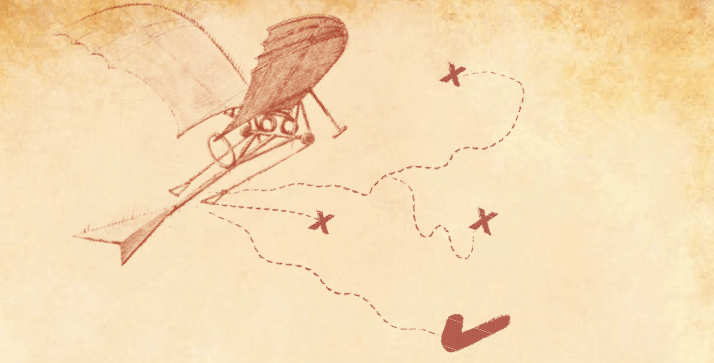Simon Kiddle is a Bristol-based European patent attorney and a partner at Mewburn Ellis. “I mainly deal with prosecution and opposition/appeal, but I’m also involved in due diligence work, strategic portfolio planning, and advising start-up companies.” Simon has a degree in chemistry from Oxford University and handles patent work in chemical, biotechnology, pharmaceutical and nanotechnology fields..

“I studied biochemistry at the University of Oxford but followed up with research in immunology at the Institute of Molecular Medicine at the John Radcliffe Hospital in Oxford and in plantpathology at the Max Planck Institute for Terrestrial Microbiology in Marburg, Germany,” says Hilary van der Hoff, who is now a European patent attorney and a Partner at Mewburn Ellis’ Cambridge office. Hilary handles patent work in biochemistry and biotechnology, in particular plant science, immunology and antibodies.


In technology-rich companies, such as those in diagnostic or analytical science fields, intellectual property is likely to mean patent applications. Simply put, patents protect technical inventions and this means the applications of science, rather than the underlying scientific principles.
Once an invention has been made, the first questions to answer are “can we patent it?”, “who should write the patent application?” and “what information will they need?”. If there is some clever new science involved in the invention, then the answer to the first question is invariably yes, as long as no one has let the cat out of the bag by disclosing the invention to the public. As patent law compares the invention defined by the claims of a patent application with what is already known (the “prior art”), a previous disclosure of your invention will usually prevent your patent from being granted, or at least limit the scope of the claims that can be obtained. Here patent law is very unforgiving as the prior art includes any type of disclosure made anywhere in the world, provided it was available to the public. This includes a description of your invention in Sanskrit deposited in the public section of a library in Mongolia. However, more commonly, the disclosure will be a poster presentation made by one of the scientists at a recent conference or a description put up by the CEO on the company website to generate interest in a new technology. Another common error comes about when a patent application is being prepared in parallel with submitting a scientific paper for review by a journal. It is common now for papers, once accepted, to be electronically published on the journal’s website. If this happens before the patent application is filed, the paper will count as prior art. Knowing in detail what disclosures have been made by the research group or the company is therefore necessary before one can work out whether an invention is patentable and what sort of claims might be obtained. In the rush to file a patent application, it is important not to overlook the question of the invention’s commercial relevance. While most good research has some angle or another that might be patentable, by no means do all of those possible patentable inventions have any commercial value. Many worthless patent applications are filed for technology that is never developed into a commercial product. The value of a patent is that it allows you to exclude other people from your invention, thereby improving your competitive position in the marketplace or generating income through selectively licensing the invention to others. Therefore, before filing a patent application you should ask yourself whether someone else would actually want access to the invention. If nobody else would want to make the invented product or run the invented process anyway, then a patent is unlikely to generate a financial return for the company. Of course, at the time of filing a patent application, the invention is typically in the early stages of development and it can be difficult to predict its potential value. Crystal ball gazing to work out how an idea will turn into a commercial product can be a challenging problem for scientists in academia or start up companies. Patent attorneys are adept at bridging this gap, or at least in keeping the wording of a patent application sufficiently open to cover changes made in development. Now, as patent attorneys, you may think that we have a vested interest in recommending that you use a patent attorney to help write your application. It is true that some scientists can make reasonable attempts at writing patent applications. However, in most cases, a patent attorney can improve a patent application and help to avoid some of the things that go wrong in drafting applications. It stands to reason that if it takes three or four years to qualify as a patent attorney, and many more to become experienced, then you are unlikely to master writing patent applications in an afternoon. It is a surprisingly common phenomenon for a patent application not to cover the intended product due to mistakes or oversights made at the time it was prepared. Other times, a poorly written patent application may cover one embodiment of an invention but fail to extend to other aspects, allowing competitors to evade the patent by making trivial modifications.
When a patent application is being prepared it is important not only to describe and define the invention, but also to include fall-back positions that can be brought into play when the application needs to be amended. It is usual to amend patent applications during their examination at the patent office, for example to ensure the claims are clear of prior art or to update the claim scope as the commercial direction of the invention evolves. The drafter of the patent application must anticipate the need for amendments and include suitable wording for them in the original application, otherwise it will not be possible to introduce such amendments when they are needed later on.
A great misconception is that the contents of a forthcoming scientific paper can simply be pasted into a hurried patent application, filed at the patent office to secure a filing date before publication of the paper, and then handed over to a patent attorney for tidying up afterwards. This approach is doomed. Patent law allows an applicant to file a further patent application for the same invention within 12 months of filing a first application and to “claim priority” from the first, which means retaining the original filing date for the invention. The snag is that priority can only be claimed for subject matter that is the consistent between the first and second patent applications, and the patent offices of many countries assess this requirement rather strictly. All too often, the patent attorney will have to extensively rewrite the text for the new application, if it is to have any hope of leading to a worthwhile patent, but the rewriting means that the new application will differ so much from the first one that it can only claim the all-important priority date for very narrow embodiments of the invention, if at all. All of this means that drafting that first priority application is critical to the success of a patent application. Skimping on time, effort and expense at this point is truly a false economy, albeit one that might not come to light for some years. So having settled on using a patent attorney to help to write your first patent application, the question then is how do you maximise your bang for the buck? The main point is one of efficiency. The process of writing a patent application is a collaborative one, and the scientist’s role is fundamental in ensuring it runs smoothly. If time is taken to fully explain the invention to the patent attorney and to provide all the relevant information in the beginning (including whatever is known of the prior art, a description of the invention, and what the future commercial plan may be) the patent attorney will be able to determine a suitable approach at the outset and to prepare the patent application accordingly.
1
Understand that any previous disclosure of your invention often prevents your patent from being granted, or at least limits the scope of the claims.
2
Be aware of electronic publishing by some journals – if it occurs before the patent application is filed, the paper will count as prior art.
3
Do not overlook the question of the invention’s commercial relevance.
4
It is not possible to master the art of writing patent applications in an afternoon; skimping on time, effort and expense is truly a false economy.
5
Don’t drip feed information or withhold important details – this will complicate and slow down the patent-writing process.
6
If you need to retain some information as a trade secret, provide details to a patent attorney for advice on whether the information is necessary in the patent application.
Drip feeding information or withholding important details, on the other hand, will complicate and slow down the process. Occasionally, researchers are tempted to gloss over certain details of an invention, either because the invention is not fully worked out or because the researcher is afraid of giving away too much information in the patent application. This is risky, not only because it may waylay the attorney, who is trying to get to grips with the key elements of the invention, but also because a patent that misses out important details may later be invalidated for insufficient or misleading disclosure. When it is desirable to retain some information as a trade secret, it is best to provide the details to the patent attorney, who will be able to advise on whether the information is needed in the patent application or not. The lure of the profitable patent motivates the development of many new and improved technologies and, in turn, the dissemination of a growing body of technical information in patent publications. For some companies and inventors, the combination of a patentable invention, sound commercial strategy and skilled patent advice leads to great wealth and success. Indeed, a company’s strongest assets may be its patents. However, for every valuable patent there are many more that absorb rather than generate funds. The pitfalls discussed in this article are a mere handful of the many reasons why some patent applications flounder, whether through bad decisions or just bad luck, but we hope it goes some way towards guiding scientists and those managing research on a path towards profitable patent can become a reality. Simon Kiddle and Hilary van der Hoff are both partners and patent attorneys at Mewburn Ellis LLP.




